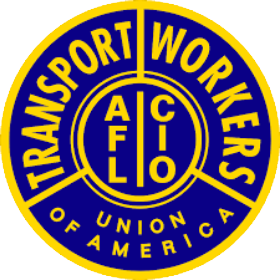Every year at this time, the network and cable television industry roll out the old favorites. So on any given prime time moment

from now until Christmas night, you’ll be able to watch any standard that suits your fancy. Whether it be the nostalgic feel of wanting a Red Ryder BB gun in “A Christmas Story,” or the magical feel of Seuss’s Grinch, you’ll be able to sit in front of a screen and daydream about the the Christmas you once had or the one you never had. It’s one of the great American pastimes.
But we’ve got some real Grinches out there these days, of whom we should take heed. With true Scrooge-like callousness, the Republicans are hard at work counting the money they will be taking away from working people and handing over to their corporate masters. If all goes as planned, there will be larger helpings of plum pudding all around for the CEOs and Executive Vice-Presidents, and after this causes trillions of dollars of debt there will be nothing left to trickle down into our stockings.
But, it doesn’t have to be that way. There can be justice. There can be equity. And there can be a government comprised of men and women who are not only capable of providing moral leadership, but brave enough to do so. We can take a look at another December story, that while it may not be the standard Christmas story, it is a story that we would be well served by reviewing because it did indeed bring some peace to men of good will. Let’s imagine a world where the corporations and their minions don’t always win…
So, not once upon a time, but rather on December 30, 1936, at just about 8 PM, frustrated autoworkers occupied the General Motors Fisher Body Plant Number One in Flint, Michigan. They were striking to gain recognition of their union, the United Auto Workers (UAW) and insure that it would be their sole collective bargaining agent. They also were demanding that the company stop outsourcing work to non-union plants, establish a fair minimum wage scale, a grievance system, and safer working conditions. That was a tall order for its day, and so it comes as no surprise that their action lasted for 44 days.
Originally inspired by similar strikes taking place in Europe, such as the French general strike, the sit down had been in the works for months. It began at smaller plants and then grew. First came the strike at Fisher Body in Atlanta on November 16, then a month later at GM in Kansas City on December 16 and a Fisher stamping plant in Cleveland on December 28. But the Flint plant was crucial because it housed one of only two sets of body dies that GM used to stamp out its 1937 cars. When workers seized the Flint plant, they virtually shut down the company.
The effect of the sit down strategy was two-fold. On a practical level it precluded the use of replacement workers. On a philosophical level, it sent a message that the workers at the Flint plant were at least co-owners of the means of production. It was this message that sent shock waves through the corporate board rooms of depression era America.
GM immediately got a court order demanding their evacuation. It went unheeded. GM then turned off the heat in the buildings. This too was ignored. By January 11, the police had been ordered to cut off the strikers’ food supply. This maneuver resulted in rioting, during which 16 workers and 11 policemen were injured. The skirmish came to be known as the “Battle of the Running Bulls,” and by the time it ended, the UAW had taken over the adjacent Fisher Two plant. The strike continued to spread, and on February 1, the UAW took control of the Chevrolet No. 4 engine factory. GM’s output was plummeting. A mere 125 cars would roll off the assembly line in February, as opposed to the 50,000 which had been produced in December. GM was beginning to feel the economic pinch nearly as smartly as the strikers.
Uncharacteristically for its time, Frank Murphy, the governor of Michigan refused to authorize the National Guard to break the strike. Much to GM’s dismay he commented: “If I send those soldiers right in on the men, there’d be no telling how many would be killed… the state authorities will not take sides. They are here only to protect the public peace.”
With President Roosevelt standing squarely and publicly on the side of labor, it would put to the test the National Labor Relations Act, which he had signed into law barely a year earlier. The act states: “Experience has proved that protection by law of the right of employees to organize and bargain collectively safeguards commerce from injury, impairment, or interruption, and promotes the flow of commerce by removing certain recognized sources of industrial strife and unrest, by encouraging practices fundamental to the friendly adjustment of industrial disputes arising out of differences as to wages, hours, or other working conditions, and by restoring equality of bargaining power between employers and employees.”
GM capitulated and agreed to recognize the union, and signed an agreement with the UAW. Workers received a 5 percent raise, but more importantly, they had, as a condition of their collective bargaining agreement the permission to speak in the lunchroom! Once again, it is hard to ignore the metaphor of worker voices being heard in the workplace.
Chrysler followed suit and signed an agreement a month after GM. And, after another 5 years of bitter struggle, Ford also signed with the UAW in 1941. On the eve of World War II, every major auto maker in the country was now a union shop. Industrial unionism had won an important victory, and the strengthened UAW would go on to become the means by which millions of American workers would find prosperity and security in the years to come.



